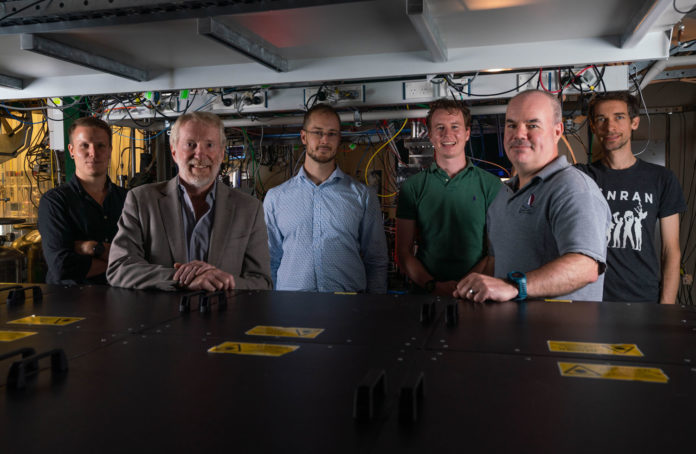Quantum electrodynamics (QED) theory describes the way light and matter interact. It includes both quantum mechanics and Einstein’s particular theory of relativity in a way that has remained successful for nearly eighty years. Recent precision atomic spectroscopy measurements have uncovered small discrepancies between experiment and theory.
One particularly powerful experimental observable that tests QED independently of traditional energy level measurements is the “tune-out” frequency.
In a new study, physicists at the Australian National University have developed the most sensitive method for measuring the potential energy of an atom. They used this method to validate QED.
The study relies on finding the color of laser light where a helium atom is invisible. The team specifically determined the invisibility of a specific atom and a specific color of light, thereby, the method can not be used to make an invisibility cloak. But, it allows them to identify some dark corners of QED theory.
Lead author Bryce Henson, a Ph.D. student at ANU Research School of Physics, said, “We were hoping to catch QED out because there have been some previous discrepancies between theory and experiments, but it passed with a pretty good mark.”
While conducting a very sensitive experiment on Bose-Einstein condensate, NU Ph.D. Scholar Bryce Henson noticed small oscillations. After measuring the frequency of the oscillations with record precision, he found that the interactions between the atoms and the laser light changed the frequency as the laser color was varied.
This effect is beneficial to determining the exact color at which the atoms did not interact at all with the laser, and the oscillation remained unchanged.
Physicists used a combination of an extremely high-resolution laser and atoms. They then cooled them to 80 billionths of a degree above absolute zero (80 nanokelvins) to achieve sensitivity in their energy measurements. They obtained sensitivity that was 5 orders of magnitude less than the energy of the atoms, around 10– 35 joules, or a temperature difference of about 10-13 of a degree kelvin.
Mr. Henson said, “That’s so small that I can’t think of any phenomenon to compare it to – it’s so far off the end of the scale.”
These measurements allowed the team to obtain an exact value for the invisibility color of helium. When they compared the results with the theoretical prediction for QED, they found that previous calculations using QED had less uncertainty than the experiments. Still, the new experimental technique improved the accuracy by 20.
Leader of the international collaboration, Professor Ken Baldwin from the ANU Research School of Physics, said that improvements to the experiment might help resolve the discrepancy and hone an extraordinary tool that could illuminate QED and other theories.”
“New tools for precision measurements often drive big changes in theoretical understanding down the track.”
Journal Reference:
- B. M. Henson et al. Measurement of a helium tune-out frequency: an independent test of quantum electrodynamics. DOI: 10.1126/science.abk2502
